实例介绍
【实例简介】Deep Learning By Example A hands-on guide to implementing advanced machine learning algorithms and neural networks
Deep Learning By Example A hands-on guide to implementing advanced machine learning algorithms and neural networks
【实例截图】
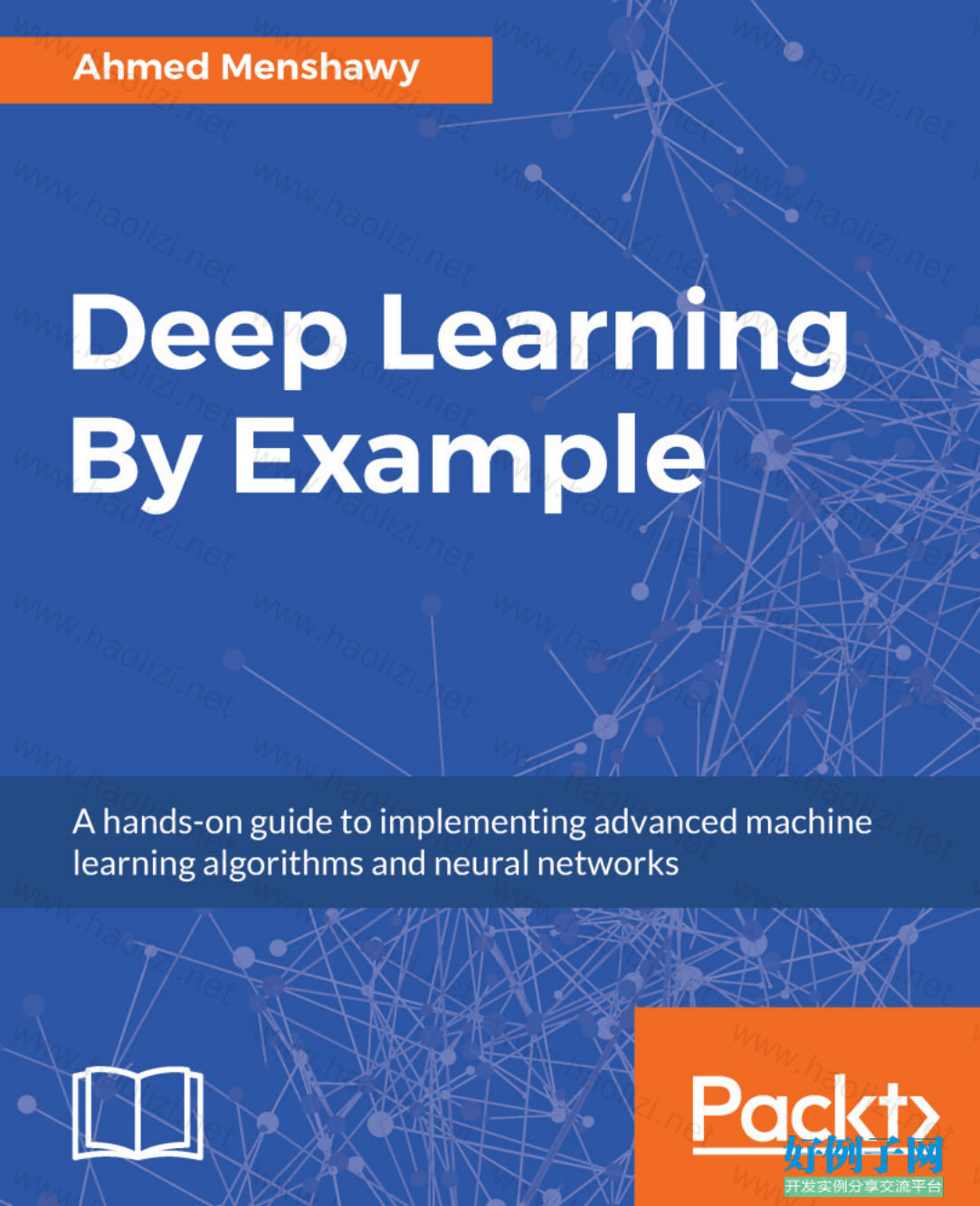
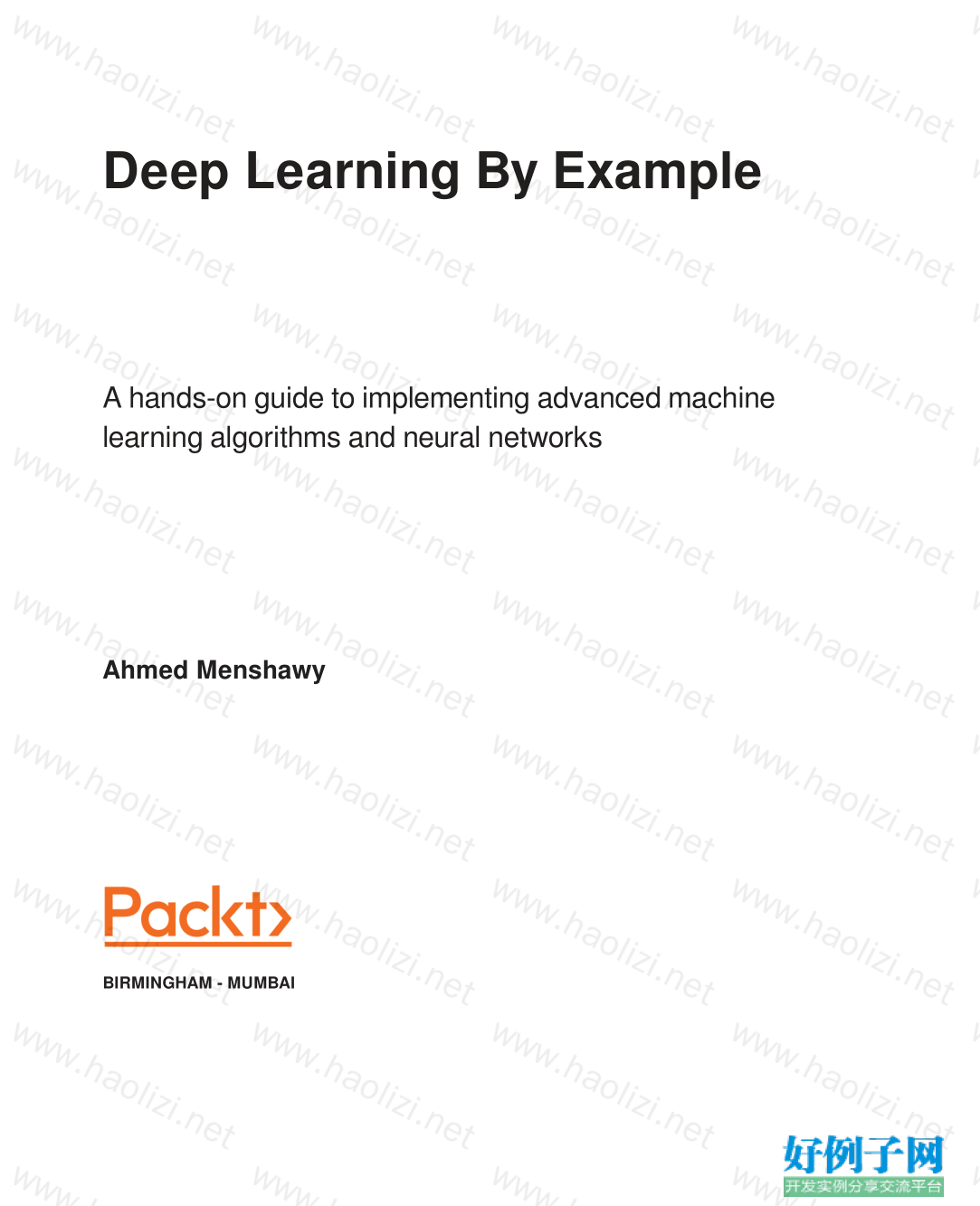
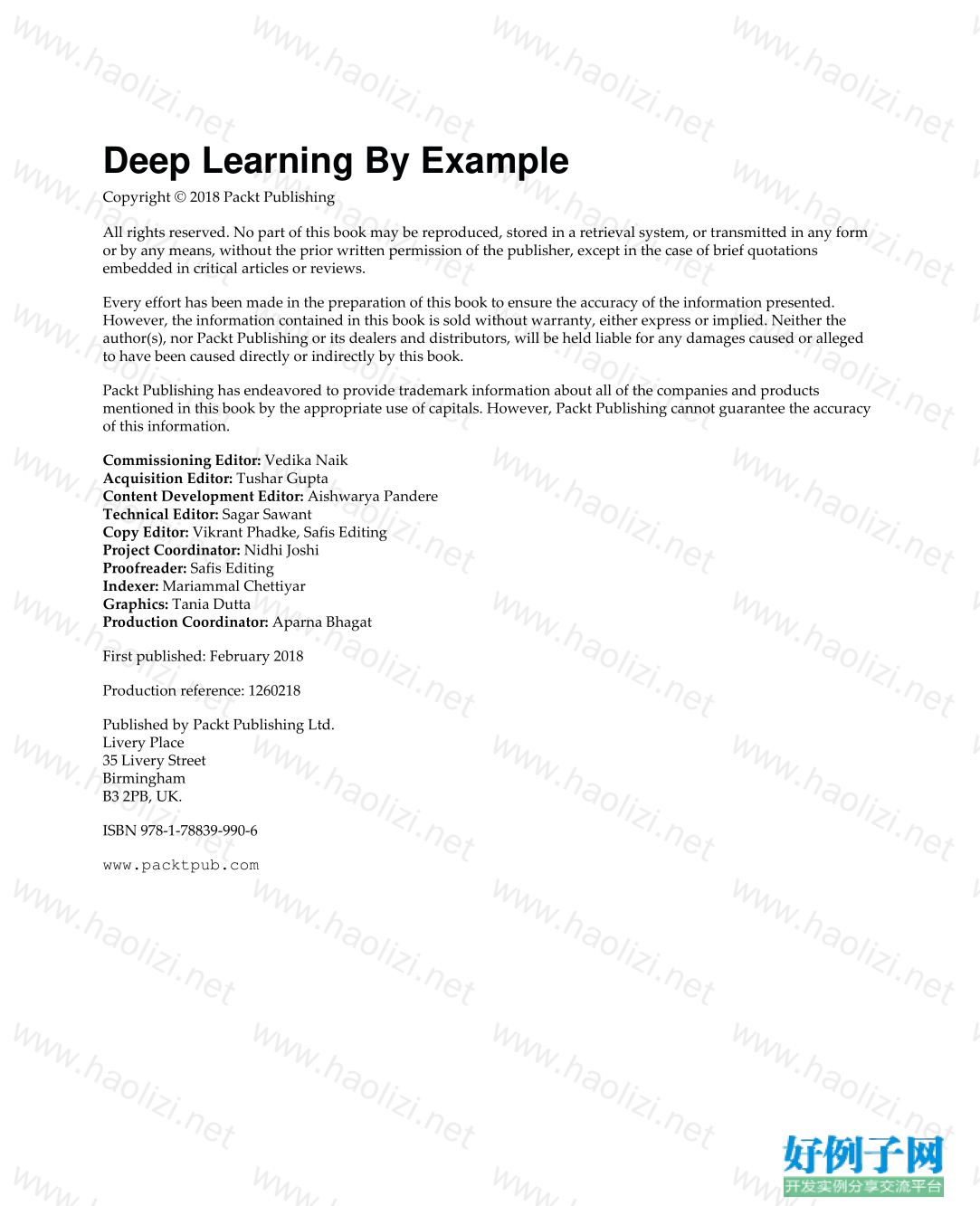
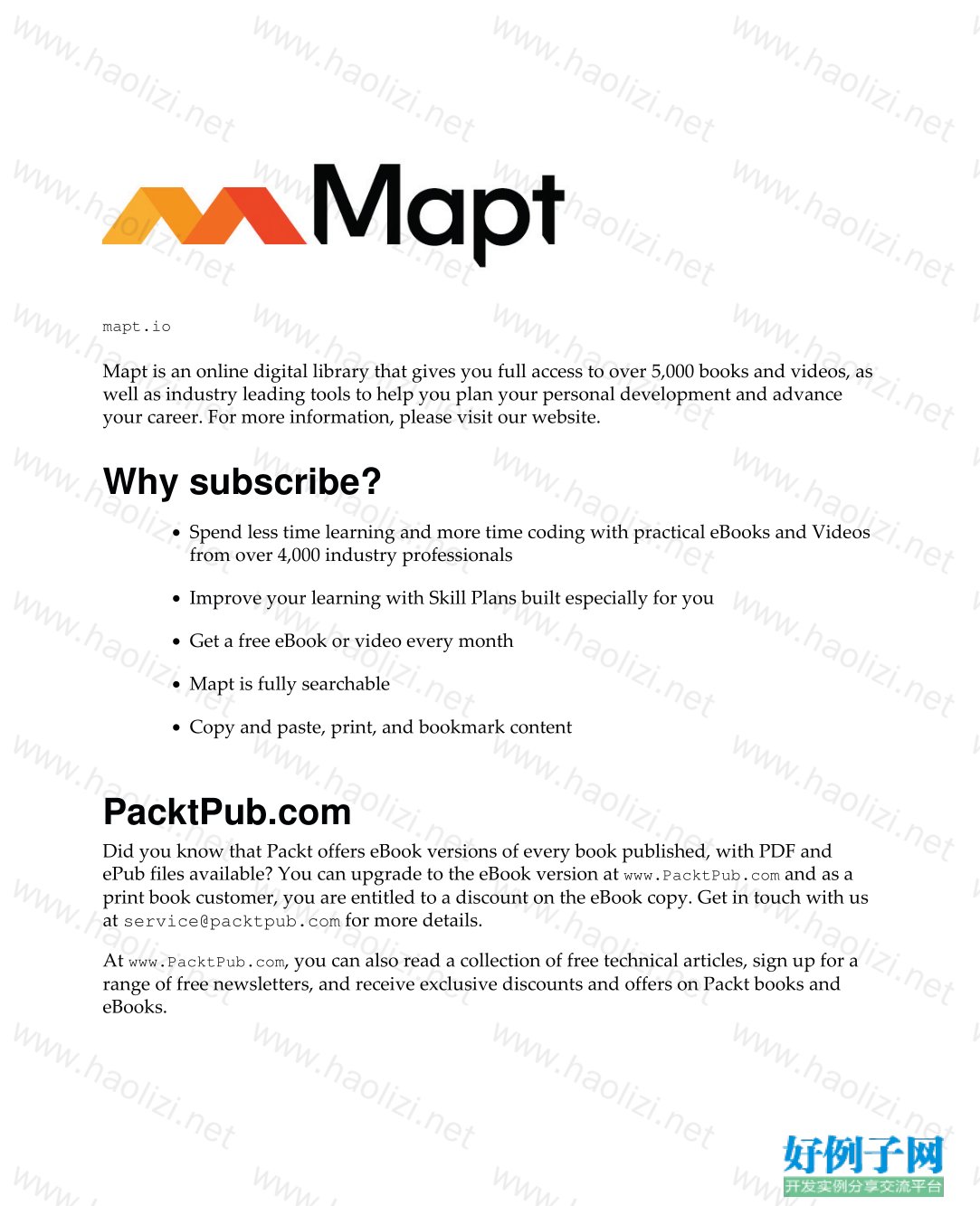

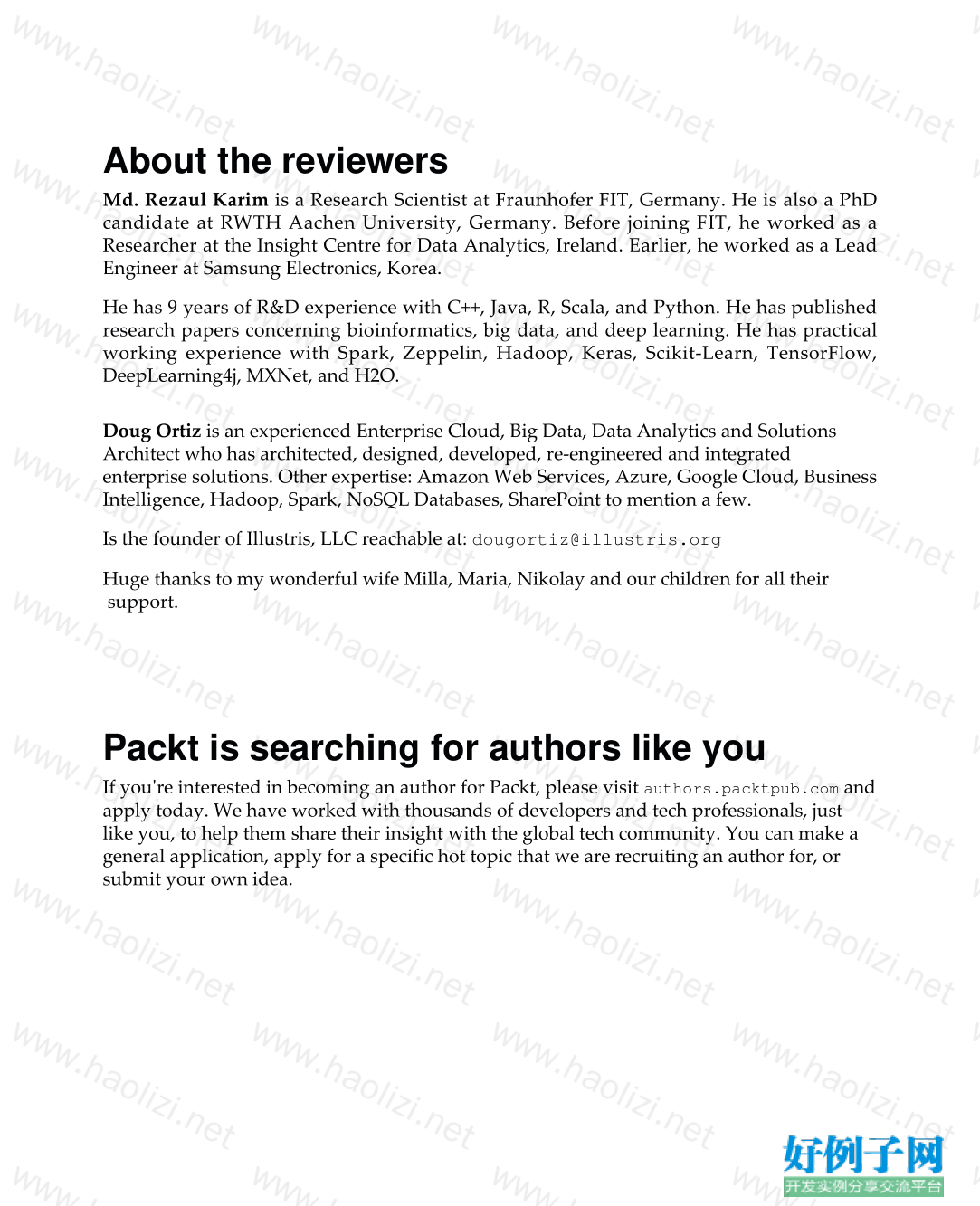
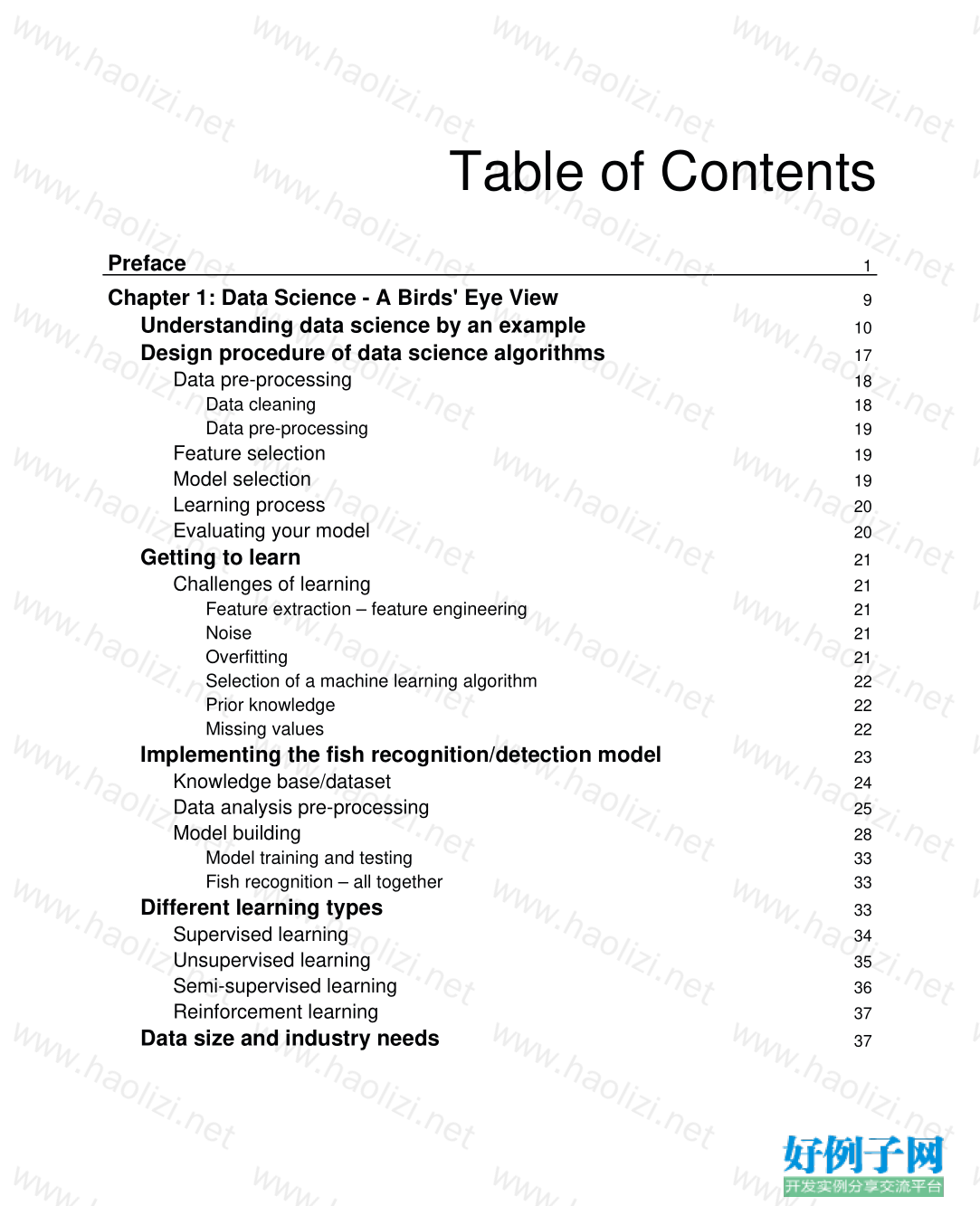
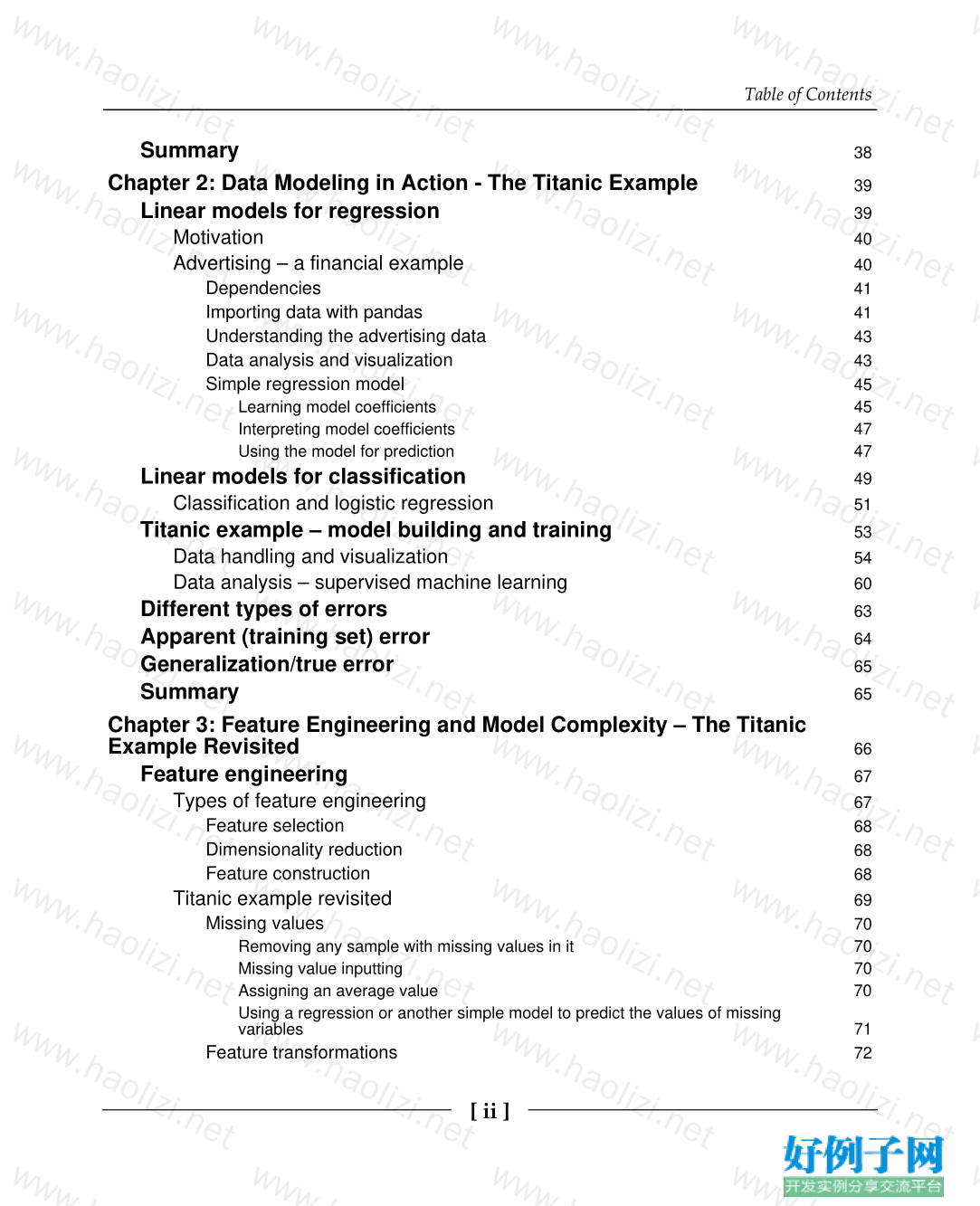


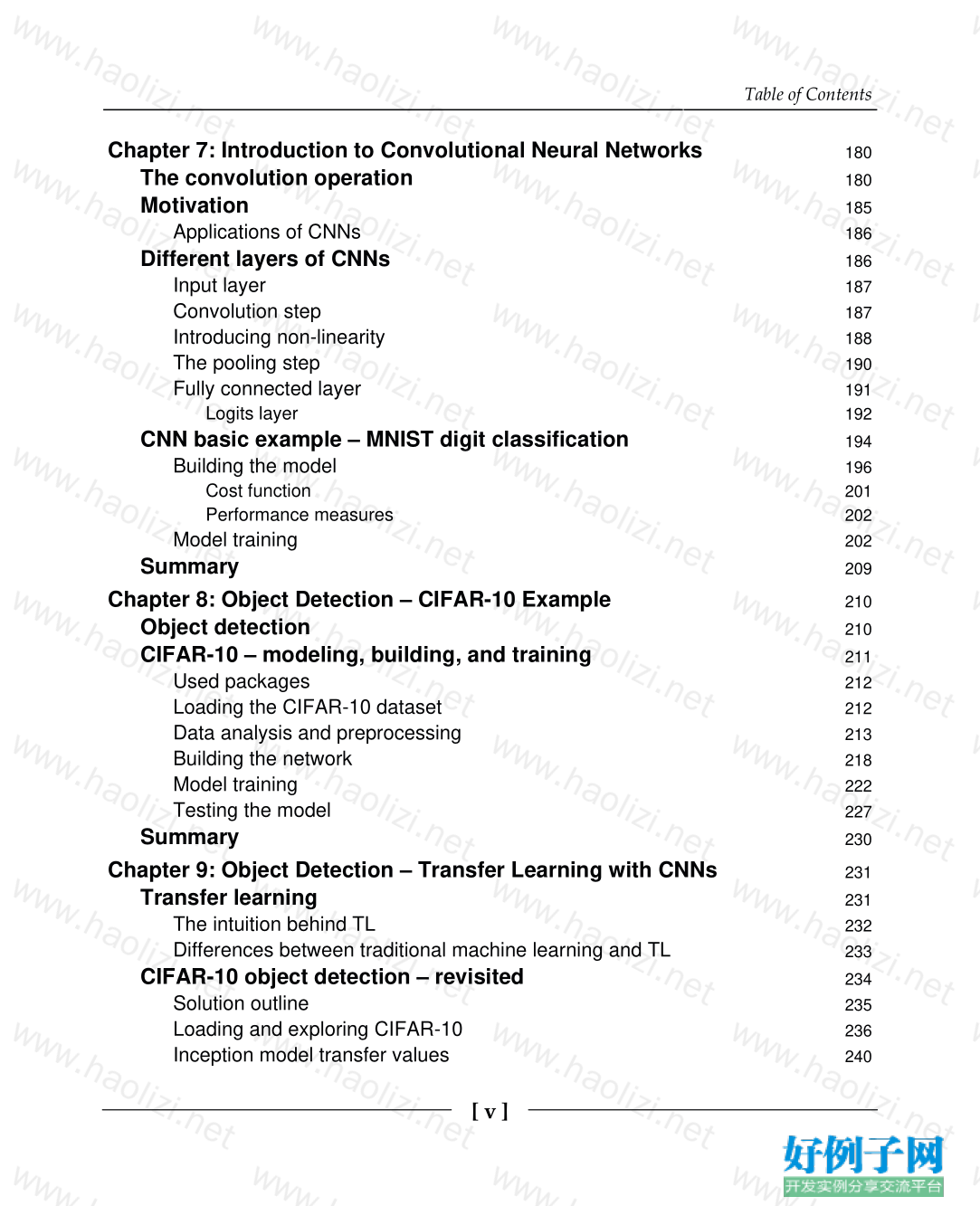
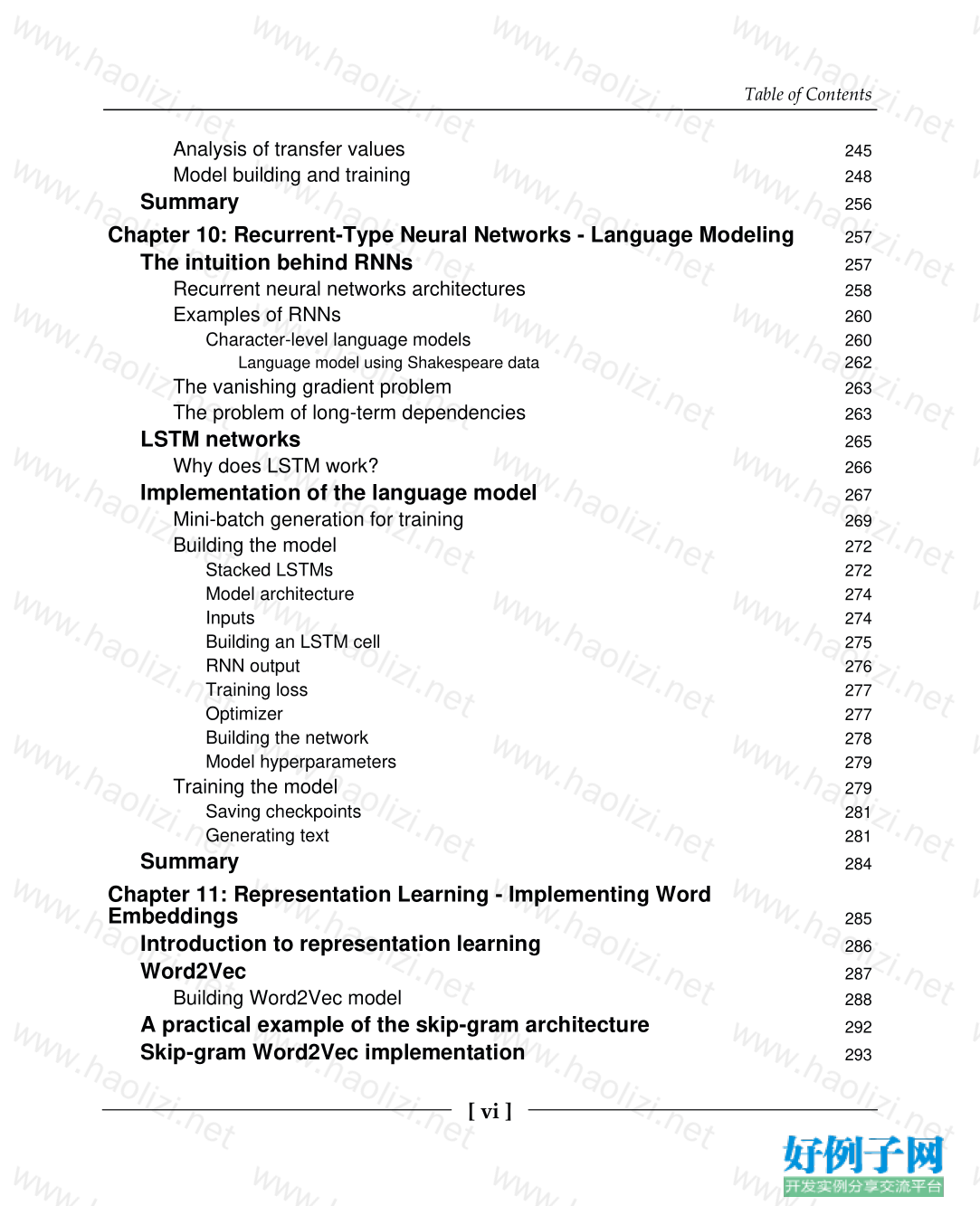
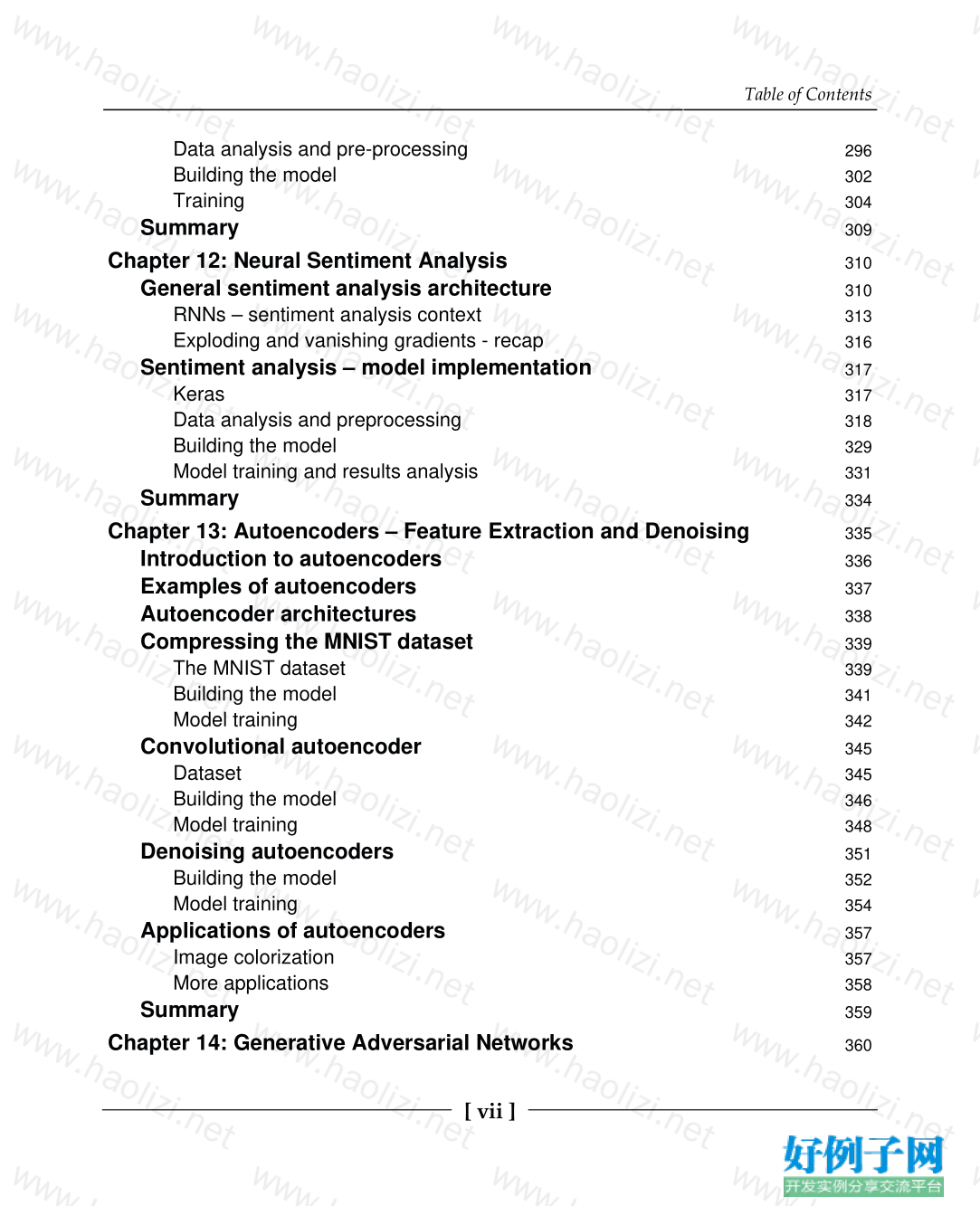
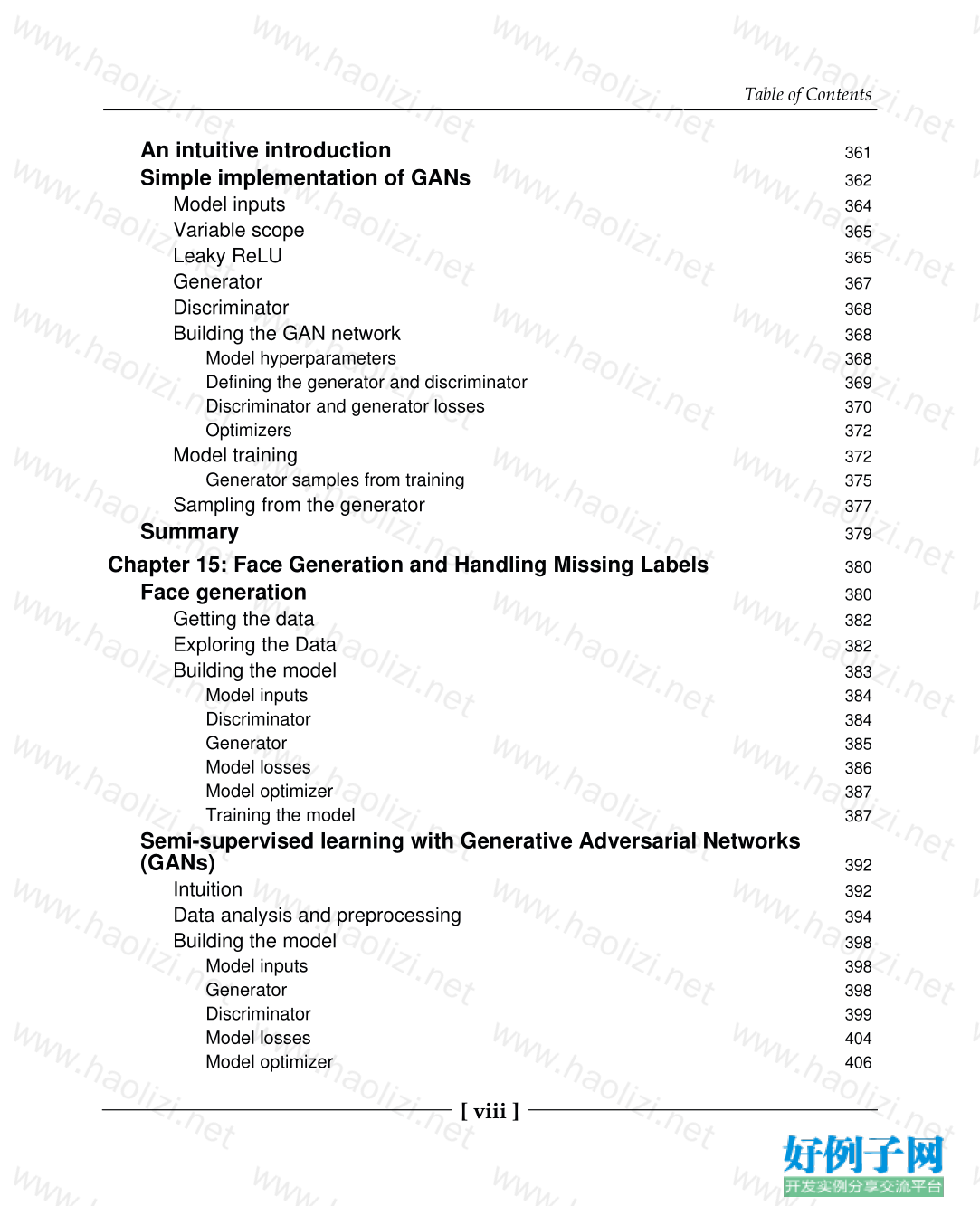

【核心代码】
Table of Contents
Preface 1
Chapter 1: Data Science - A Birds' Eye View 9
Understanding data science by an example 10
Design procedure of data science algorithms 17
Data pre-processing 18
Data cleaning 18
Data pre-processing 19
Feature selection 19
Model selection 19
Learning process 20
Evaluating your model 20
Getting to learn 21
Challenges of learning 21
Feature extraction – feature engineering 21
Noise 21
Overfitting 21
Selection of a machine learning algorithm 22
Prior knowledge 22
Missing values 22
Implementing the fish recognition/detection model 23
Knowledge base/dataset 24
Data analysis pre-processing 25
Model building 28
Model training and testing 33
Fish recognition – all together 33
Different learning types 33
Supervised learning 34
Unsupervised learning 35
Semi-supervised learning 36
Reinforcement learning 37
Data size and industry needs 37
Table of Contents
[ ii ]
Summary 38
Chapter 2: Data Modeling in Action - The Titanic Example 39
Linear models for regression 39
Motivation 40
Advertising – a financial example 40
Dependencies 41
Importing data with pandas 41
Understanding the advertising data 43
Data analysis and visualization 43
Simple regression model 45
Learning model coefficients 45
Interpreting model coefficients 47
Using the model for prediction 47
Linear models for classification 49
Classification and logistic regression 51
Titanic example – model building and training 53
Data handling and visualization 54
Data analysis – supervised machine learning 60
Different types of errors 63
Apparent (training set) error 64
Generalization/true error 65
Summary 65
Chapter 3: Feature Engineering and Model Complexity – The Titanic
Example Revisited 66
Feature engineering 67
Types of feature engineering 67
Feature selection 68
Dimensionality reduction 68
Feature construction 68
Titanic example revisited 69
Missing values 70
Removing any sample with missing values in it 70
Missing value inputting 70
Assigning an average value 70
Using a regression or another simple model to predict the values of missing
variables 71
Feature transformations 72
Table of Contents
[ iii ]
Dummy features 72
Factorizing 73
Scaling 73
Binning 74
Derived features 74
Name 75
Cabin 76
Ticket 77
Interaction features 78
The curse of dimensionality 80
Avoiding the curse of dimensionality 82
Titanic example revisited – all together 83
Bias-variance decomposition 95
Learning visibility 98
Breaking the rule of thumb 98
Summary 98
Chapter 4: Get Up and Running with TensorFlow 100
TensorFlow installation 100
TensorFlow GPU installation for Ubuntu 16.04 101
Installing NVIDIA drivers and CUDA 8 101
Installing TensorFlow 104
TensorFlow CPU installation for Ubuntu 16.04 105
TensorFlow CPU installation for macOS X 106
TensorFlow GPU/CPU installation for Windows 108
The TensorFlow environment 108
Computational graphs 110
TensorFlow data types, variables, and placeholders 111
Variables 112
Placeholders 113
Mathematical operations 114
Getting output from TensorFlow 115
TensorBoard – visualizing learning 118
Summary 123
Chapter 5: TensorFlow in Action - Some Basic Examples 124
Capacity of a single neuron 125
Biological motivation and connections 125
Table of Contents
[ iv ]
Activation functions 127
Sigmoid 128
Tanh 128
ReLU 128
Feed-forward neural network 129
The need for multilayer networks 130
Training our MLP – the backpropagation algorithm 132
Step 1 – forward propagation 133
Step 2 – backpropagation and weight updation 134
TensorFlow terminologies – recap 135
Defining multidimensional arrays using TensorFlow 137
Why tensors? 139
Variables 140
Placeholders 141
Operations 143
Linear regression model – building and training 144
Linear regression with TensorFlow 145
Logistic regression model – building and training 149
Utilizing logistic regression in TensorFlow 149
Why use placeholders? 150
Set model weights and bias 151
Logistic regression model 151
Training 152
Cost function 152
Summary 157
Chapter 6: Deep Feed-forward Neural Networks - Implementing Digit
Classification 158
Hidden units and architecture design 158
MNIST dataset analysis 160
The MNIST data 161
Digit classification – model building and training 162
Data analysis 166
Building the model 169
Model training 174
Summary 179
Table of Contents
[ v ]
Chapter 7: Introduction to Convolutional Neural Networks 180
The convolution operation 180
Motivation 185
Applications of CNNs 186
Different layers of CNNs 186
Input layer 187
Convolution step 187
Introducing non-linearity 188
The pooling step 190
Fully connected layer 191
Logits layer 192
CNN basic example – MNIST digit classification 194
Building the model 196
Cost function 201
Performance measures 202
Model training 202
Summary 209
Chapter 8: Object Detection – CIFAR-10 Example 210
Object detection 210
CIFAR-10 – modeling, building, and training 211
Used packages 212
Loading the CIFAR-10 dataset 212
Data analysis and preprocessing 213
Building the network 218
Model training 222
Testing the model 227
Summary 230
Chapter 9: Object Detection – Transfer Learning with CNNs 231
Transfer learning 231
The intuition behind TL 232
Differences between traditional machine learning and TL 233
CIFAR-10 object detection – revisited 234
Solution outline 235
Loading and exploring CIFAR-10 236
Inception model transfer values 240
Table of Contents
[ vi ]
Analysis of transfer values 245
Model building and training 248
Summary 256
Chapter 10: Recurrent-Type Neural Networks - Language Modeling 257
The intuition behind RNNs 257
Recurrent neural networks architectures 258
Examples of RNNs 260
Character-level language models 260
Language model using Shakespeare data 262
The vanishing gradient problem 263
The problem of long-term dependencies 263
LSTM networks 265
Why does LSTM work? 266
Implementation of the language model 267
Mini-batch generation for training 269
Building the model 272
Stacked LSTMs 272
Model architecture 274
Inputs 274
Building an LSTM cell 275
RNN output 276
Training loss 277
Optimizer 277
Building the network 278
Model hyperparameters 279
Training the model 279
Saving checkpoints 281
Generating text 281
Summary 284
Chapter 11: Representation Learning - Implementing Word
Embeddings 285
Introduction to representation learning 286
Word2Vec 287
Building Word2Vec model 288
A practical example of the skip-gram architecture 292
Skip-gram Word2Vec implementation 293
Table of Contents
[ vii ]
Data analysis and pre-processing 296
Building the model 302
Training 304
Summary 309
Chapter 12: Neural Sentiment Analysis 310
General sentiment analysis architecture 310
RNNs – sentiment analysis context 313
Exploding and vanishing gradients - recap 316
Sentiment analysis – model implementation 317
Keras 317
Data analysis and preprocessing 318
Building the model 329
Model training and results analysis 331
Summary 334
Chapter 13: Autoencoders – Feature Extraction and Denoising 335
Introduction to autoencoders 336
Examples of autoencoders 337
Autoencoder architectures 338
Compressing the MNIST dataset 339
The MNIST dataset 339
Building the model 341
Model training 342
Convolutional autoencoder 345
Dataset 345
Building the model 346
Model training 348
Denoising autoencoders 351
Building the model 352
Model training 354
Applications of autoencoders 357
Image colorization 357
More applications 358
Summary 359
Chapter 14: Generative Adversarial Networks 360
Table of Contents
[ viii ]
An intuitive introduction 361
Simple implementation of GANs 362
Model inputs 364
Variable scope 365
Leaky ReLU 365
Generator 367
Discriminator 368
Building the GAN network 368
Model hyperparameters 368
Defining the generator and discriminator 369
Discriminator and generator losses 370
Optimizers 372
Model training 372
Generator samples from training 375
Sampling from the generator 377
Summary 379
Chapter 15: Face Generation and Handling Missing Labels 380
Face generation 380
Getting the data 382
Exploring the Data 382
Building the model 383
Model inputs 384
Discriminator 384
Generator 385
Model losses 386
Model optimizer 387
Training the model 387
Semi-supervised learning with Generative Adversarial Networks
(GANs) 392
Intuition 392
Data analysis and preprocessing 394
Building the model 398
Model inputs 398
Generator 398
Discriminator 399
Model losses 404
Model optimizer 406
Table of Contents
[ ix ]
Model training 407
Summary 411
????????: Implementing Fish Recognition 412
Code for fish recognition 412
Other Books You May Enjoy 418
Index 421
Deep Learning By Example A hands-on guide to implementing advanced machine learning algorithms and neural networks
小贴士
感谢您为本站写下的评论,您的评论对其它用户来说具有重要的参考价值,所以请认真填写。
- 类似“顶”、“沙发”之类没有营养的文字,对勤劳贡献的楼主来说是令人沮丧的反馈信息。
- 相信您也不想看到一排文字/表情墙,所以请不要反馈意义不大的重复字符,也请尽量不要纯表情的回复。
- 提问之前请再仔细看一遍楼主的说明,或许是您遗漏了。
- 请勿到处挖坑绊人、招贴广告。既占空间让人厌烦,又没人会搭理,于人于己都无利。
关于好例子网
本站旨在为广大IT学习爱好者提供一个非营利性互相学习交流分享平台。本站所有资源都可以被免费获取学习研究。本站资源来自网友分享,对搜索内容的合法性不具有预见性、识别性、控制性,仅供学习研究,请务必在下载后24小时内给予删除,不得用于其他任何用途,否则后果自负。基于互联网的特殊性,平台无法对用户传输的作品、信息、内容的权属或合法性、安全性、合规性、真实性、科学性、完整权、有效性等进行实质审查;无论平台是否已进行审查,用户均应自行承担因其传输的作品、信息、内容而可能或已经产生的侵权或权属纠纷等法律责任。本站所有资源不代表本站的观点或立场,基于网友分享,根据中国法律《信息网络传播权保护条例》第二十二与二十三条之规定,若资源存在侵权或相关问题请联系本站客服人员,点此联系我们。关于更多版权及免责申明参见 版权及免责申明



网友评论
我要评论